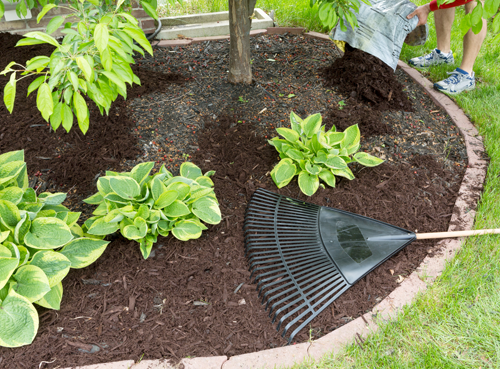
By: Rebecca Gutknecht
The smell of spring is in the air. Honey bees are buzzing, vibrant flowers are blooming and the colors of the season are coming alive. It’s always so refreshing to experience the gift of spring. You can create a slice of heaven in your own backyard. So, how do you revive and revitalize your own garden? Time to bring that green thumb out of hibernation and get busy!
Check for damage
Before you even think about garden revival, get rid of infected and dead plant life. Unhealthy shrubs can spread to the outskirts of your garden and wreak havoc on new growth. Look for dead grass and plants. Darkened stems with little to no green, mushy leaves and brittle branches are marks of a dead plant. If necessary, pull out the plant or trim the ends. Pruning is the most important step in maintaining and creating a thriving garden. Quick tip: it’s best to finish pruning by early spring.
Tend to the soil
Healthy soil is the bread and butter of a lively garden. At the end of winter, ice thaws and saturates the ground, stripping the soil’s natural source of nutrients. Rake the soil to break up the hard clots of dirt to allow for it to breathe and encourage new growth. Let the water drain and evaporate over the course of a couple weeks before fertilizing. When ready, add mulch and fertilizer to provide nutrients to restore life. Some alternatives to fertilizer are: coffee grounds, eggshells and banana peels.
Set up supports
Give plants the tools they need to thrive during the warmer months to come. If you have any climbing plants, give them a boost with a trellis or stake. Sweet peas, petunias, and jasmine are common climbers. Do some research on your garden and figure out how to tend to the specific needs of each plant and flower. Some plants do better in shallow flower beds, while others prefer deeper, richer soil. Knowledge is key to creating a beautiful garden.
Plant seeds and flowers
You are finally ready to add extra flare to your garden. Now that the soil and supports are complete, you can seed your heart away. Be wary of your climate zone; plants only grow in specific zones. For example, North Carolina has five zones while California has much more. If you want to go all out, you can draw out your landscape plan and design your perfect garden. Think about ground cover, flowers, green shrubs, annuals and perennials. Happy gardening!



